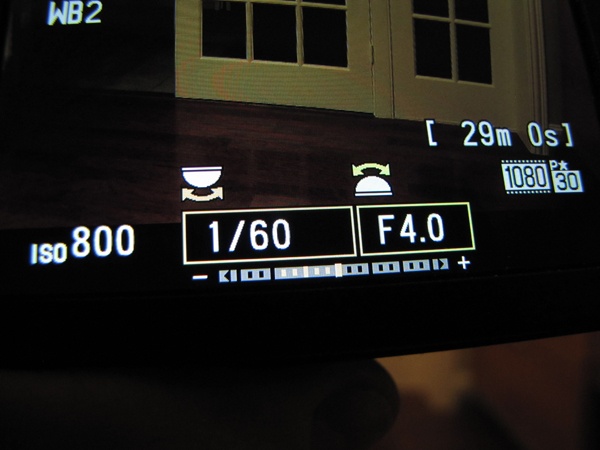Review: Nikon P7700 Digital Camera
In the P7700, Nikon has improved on earlier P7000 models with numerous video formats and a microphone input, plus a tilt-swivel display and several under-the-hood improvements. Is this the video-and-stills powerhouse I've been waiting for?
Operationally Speaking
The first thing you notice when you start up the camera is that it takes more than six seconds before you can begin framing the shot. In fast run-and-gun situations, that's an eternity. If you need this camera to respond quickly at an event, leave it on. Overall speed is also a bit sluggish and you can easily overwhelm the buffer with RAW still images. It's faster than previous models, but it's still not a "fast" camera to use.
Unlike the still modes which offer a histogram for exposure assessment, video mode on the P7700 has a small bar at the bottom of the display to tell you how far under- or over-exposed the camera thinks you are based on how it would expose the scene (Figure 4, below). Generally this is fine, but in certain backlit or spotlight situations, the camera's assessment is useless. You can do it manually, of course, but an on-screen histogram would help nail the exposure just by telling you what the camera sees, not how it compares with what the camera thinks you should set it at.

Figure 4. A bar at the bottom of the display recommends proper exposure for a scene, but it's not always accurate or useful.
Video Tests
The quality of the images produced by the Nikon is key. Unlike my hacked GH2, you cannot adjust the recording data rate of the Nikon. You get what it provides. However, you can adjust the color profile you shoot with, and you can adjust certain parameters within that profile as well. For this test, I shot with both cameras on Standard profile.
My hacked GH2 records a much more comfortable 37 Mbps AVCHD stream compared to the the 19 Mbps AVC footage the 7700 records. However, the Nikon uses AAC compression for the audio whereas the GH2 does not compress the audio, instead providing a stereo PCM track. This means that the audio stream takes up a greater percentage of the overall data rate on the GH2 than the P7700.
One aspect I had trouble with was the zoom lens. Most compact cameras that offer video capability these days let you zoom the lens while recording video. The P7700 let me zoom--sometimes. Eventually I figured it out. In custom movie mode, I can't zoom. In regular movie mode, I can zoom. I couldn't figure out why the limitation was there for custom movie mode.
Conversely, I can't set the ISO in regular movie mode; I can set it only in Custom Movie Mode. So there is a definite incongruity between what features work in what modes. Moreover, even in Basic Movie Mode--essentially, the 7700's "auto" mode--the camera will not automatically adjust the exposure to ensure good images. I expect that behavior in Custom Movie Mode, since it lets me set my exposure manually. But in Basic Movie Mode, I expect the camera to adjust for me. Not so with the P7700.
Related Articles
D7100 features 24.1 megapixel CMOS sensor, 51 focus points including 15 cross-type sensors, 100-6400 ISO range, and new WU-1a wireless mobile adapter
In Part 1 of this two-part series on the Nikon D800, I looked at the operation and functionality of the D800 DSLR as a video camera. Now, in Part 2, I'll share some usability notes, as report the results of some audio and video tests (with test footage) comparing the D800 to another highly regarded DSLR, the Panasonic GH2--to see if a lower-priced but very capable DSLR can measure up with quality glass--and to a more traditional prosumer camcorder.
In this two-part series, we'll examine how well Nikon's much-heralded D800 DSLR works as a video camera, in terms of operability and functionality. In part two, we'll report on some audio and video tests comparing the D800 to another highly regarded DSLR, and to a more traditional prosumer camcorder.